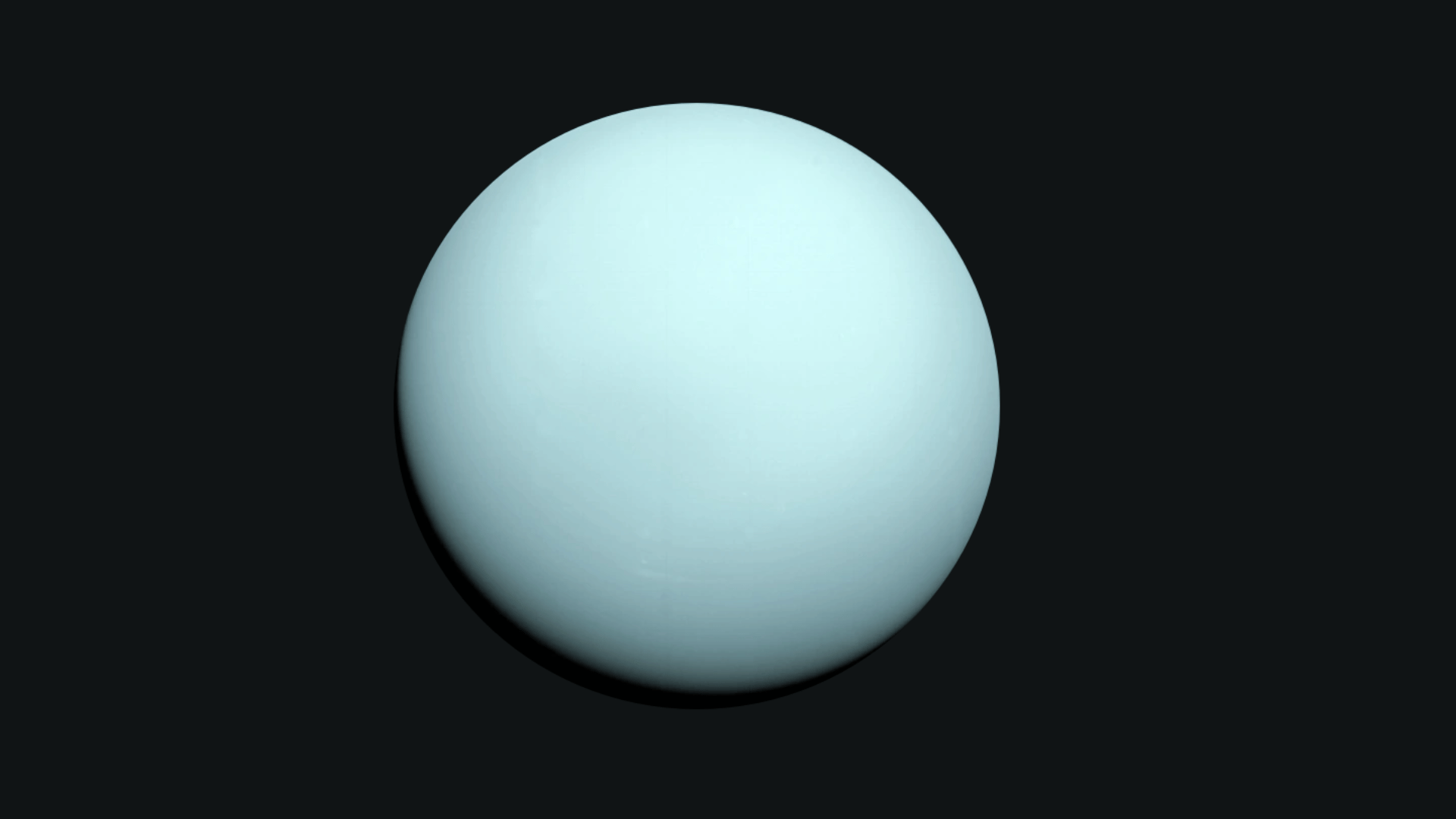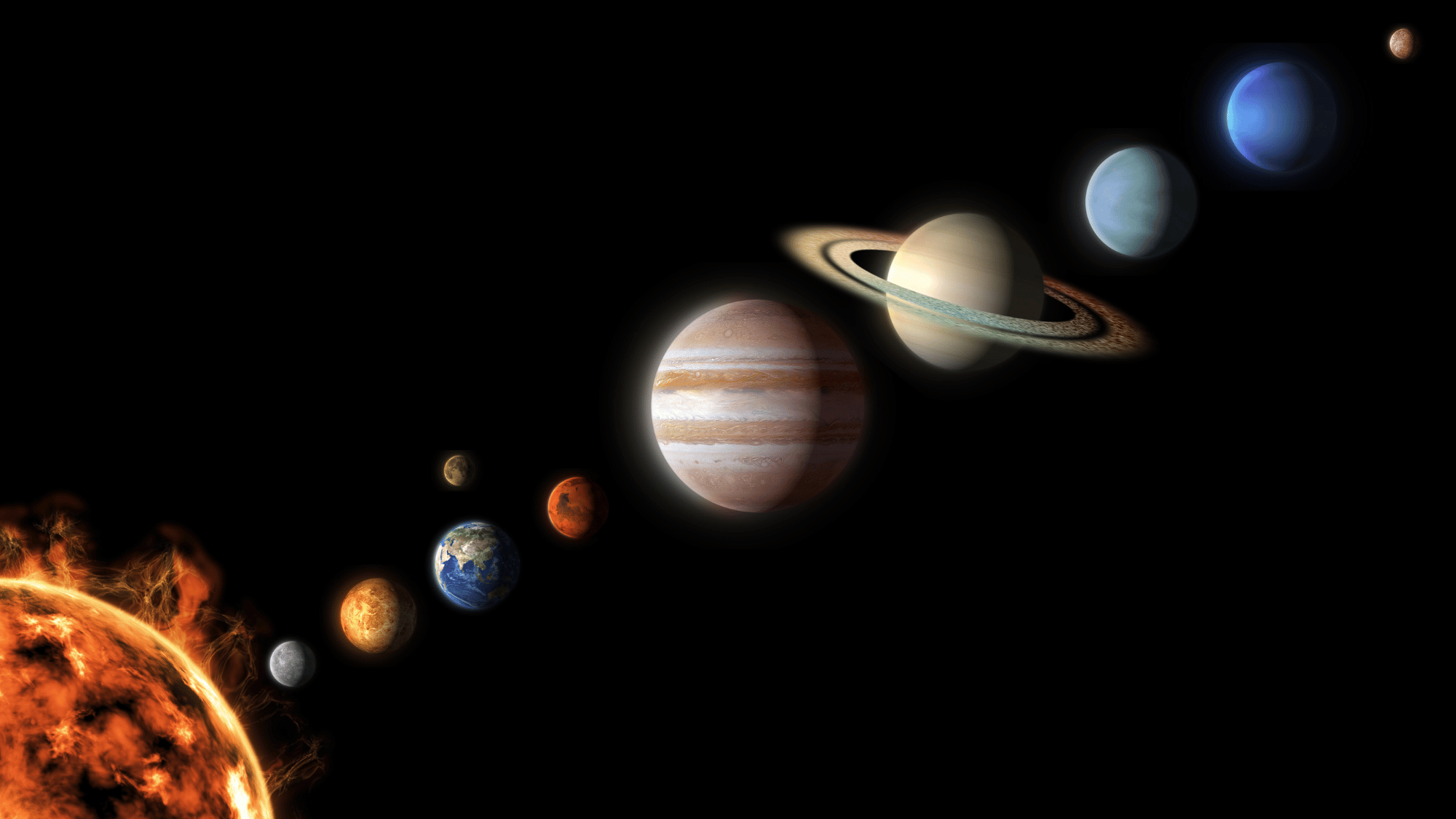Welcome to an in-depth look at Uranus, a planet that continues to challenge what we know about the outer solar system.
Although it often receives less attention than other planets, Uranus stands out for its unique features and mysteries that continue to interest scientists and space observers.
Its distinct characteristics, strange orientation, and complex atmosphere make it a planet worth learning about.
In this blog, we’ll take a closer look at key facts, scientific findings, and surprising details that help explain what makes Uranus so remarkable among the outer planets.
Fun Facts about Uranus

Image Source: National Radio Astronomy Observatory
Uranus is full of surprises, from its sideways spin and icy atmosphere to its mysterious moons and rings, making it truly fascinating.
-
Uranus is the seventh planet from the Sun.
-
It was discovered by William Herschel in 1781.
-
Herschel first thought he had found a star.
-
Earlier astronomers, including John Flamsteed, saw Uranus but mistook it for a star.
-
Flamsteed recorded it in 1690 as a star called “34 Tauri.”
-
Herschel originally named it “Georgium Sidus” after King George III.
-
Astronomers later renamed it Uranus, from the Greek god of the sky, Ouranos.
-
It is the only planet named after a Greek god rather than a Roman one.
-
Uranus orbits the Sun at about 1.8 billion miles (2.9 billion km) away.
-
It takes 84 Earth years to complete one orbit around the Sun.
-
A day on Uranus lasts 17 hours and 14 minutes.
-
Its diameter is approximately 31,518 miles (50,724 km).
-
Uranus is the third-largest planet in our solar system.
-
It’s about four times wider than Earth.
-
Uranus is about 14.5 times more massive than Earth.
-
About 63 Earths could fit inside Uranus.
-
The planet’s gravity is about 89% that of Earth’s.
-
You would weigh nearly the same on Uranus as on Earth.
-
Uranus is classified as an ice giant.
-
It’s made mostly of hydrogen, helium, water, methane, and ammonia.
-
Its blue-green color comes from methane in the atmosphere.
-
Methane absorbs red light and reflects blue-green light.
-
Uranus is one of the coldest planets in the solar system.
-
Temperatures can drop to -224°C (-371°F).
-
Its atmosphere contains hydrogen, helium, and a small amount of methane.
-
The planet’s atmosphere has very few visible clouds.
-
In visible light, Uranus appears almost featureless.
-
Winds on Uranus can reach speeds of 560 mph (900 km/h).
-
Uranus emits almost the same amount of energy as it receives from the Sun.
-
Unlike Jupiter and Saturn, it has very little internal heat.
-
This lack of internal heat contributes to its cold atmosphere.
-
Uranus rotates on its side with a tilt of 97.8 degrees.
-
It appears to roll around the Sun like a ball.
-
The tilt likely came from a massive collision early in its history.
-
Each pole experiences 42 years of sunlight followed by 42 years of darkness.
-
The planet spins in a retrograde direction, opposite most planets.
-
Uranus’s distance from the Sun causes sunlight to take about 2 hours and 40 minutes to reach it.
-
The Sun would appear about 1/400th as bright as from Earth.
-
Uranus’s core is likely rocky, about the size of Earth.
-
The core’s temperature may reach 5,000°C (9,000°F).
-
Above the core lies an icy mantle of water, methane, and ammonia.
-
This “ice” is actually a hot, dense fluid under extreme pressure.
-
Scientists believe diamonds may form deep within the planet.
-
Diamond rain could literally fall inside Uranus’s atmosphere.
-
Uranus has a magnetic field tilted 59 degrees from its axis.
-
The magnetic field is also offset from the planet’s center.
-
This creates a strange and irregular magnetosphere.
-
Uranus has 13 known rings.
-
The rings were discovered in 1977 during a stellar occultation.
-
They are composed of dark dust and rock, not bright ice like Saturn’s rings.
-
The Epsilon ring is the brightest and most prominent.
-
Two additional faint rings were discovered by the Hubble Space Telescope in 2005.
-
Some rings are less than a mile wide.
-
The particles in the rings range from dust-sized grains to large boulders.
-
The rings may have formed from shattered moons.
-
Uranus has 27 known moons.
-
The moons are named after characters from Shakespeare and Alexander Pope.
-
The five largest moons are Miranda, Ariel, Umbriel, Titania, and Oberon.
-
Titania is the largest moon, about 980 miles (1,578 km) in diameter.
-
Miranda has one of the most bizarre surfaces in the solar system.
-
Miranda’s Verona Rupes is a cliff about 12 miles (20 km) high.
-
That cliff is about ten times deeper than the Grand Canyon.
-
Most of Uranus’s moons orbit in the same plane as its equator.
-
Many moons were discovered during the Voyager 2 mission in 1986.
-
Voyager 2 remains the only spacecraft to have visited Uranus.
-
The flyby lasted about six hours.
-
Voyager 2 discovered 10 new moons and two new rings.
-
It revealed the first close-up images of Uranus and its moons.
-
Uranus’s radiation belts were found to be surprisingly strong.
-
Voyager 2’s data still forms the basis of much of what we know about Uranus today.
-
Future missions to Uranus have been proposed but not yet confirmed.
-
A journey to Uranus would take about 10 to 15 years.
-
Uranus emits only 1.06 times the energy it receives from the Sun.
-
Jupiter, by comparison, emits 1.7 times more energy than it receives.
-
Scientists think Uranus’s low heat output is linked to its early collision.
-
The same impact may explain its extreme tilt and unique moons.
-
Uranus has the most extreme seasons of any planet.
-
During summer, one pole faces the Sun directly.
-
During winter, the same pole is plunged into darkness.
-
The polar regions receive more solar energy during solstice than the equator.
-
Uranus is just barely visible to the naked eye under dark skies.
-
Its maximum brightness is around magnitude 5.3.
-
Seeing it without a telescope requires knowing exactly where to look.
-
Through a telescope, Uranus appears as a small blue-green disk.
-
It reaches opposition roughly once each year.
-
At opposition, Uranus is about 1.7 billion miles from Earth.
-
Adaptive optics and infrared imaging now allow clearer views of Uranus.
-
These technologies help astronomers see cloud structures in its hazy atmosphere.
-
The exact composition of Uranus’s interior remains uncertain.
-
Scientists are still studying why its atmosphere is so cold.
-
Its unusual magnetic field is not yet fully understood.
-
Storm formation on Uranus remains an active area of research.
-
Despite its similarity to Neptune, Uranus behaves very differently.
-
Violent storms may occur during its equinoxes every 42 years.
-
Recent observations show more storm activity than previously thought.
-
Aurorae have been detected on Uranus, first confirmed in 2011.
-
X-rays were detected from Uranus for the first time in 2020.
-
Some of its moons may have subsurface oceans beneath icy crusts.
-
Computer models suggest Uranus might have experienced multiple giant impacts.
-
Uranus continues to surprise scientists, reminding us that even distant planets can hold endless mysteries.
Conclusion
After reviewing these facts, it’s clear that Uranus is much more than just another planet in our solar system; it’s a place full of unique features, complex systems, and unanswered questions that continue to capture scientific interest.
As technology advances and new missions are proposed, we can only imagine what future revelations await us.
The universe is full of surprises, and Uranus reminds us that even familiar celestial neighbors can astound us.
Keep looking up, there’s always something extraordinary waiting to be explored among the stars!


















